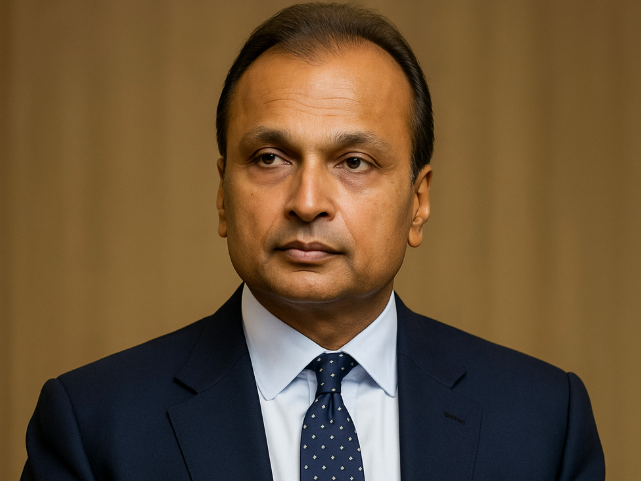
In February 2020, while the world was grappling with the fear of COVID-19, Indian businessman Anil Ambani appeared online before a London court. He was accused of failing to repay loans taken from Chinese banks. During the hearing, when the judge questioned why he hadn't repaid the loans, Ambani claimed his net worth was zero and that he had gone bankrupt. When asked how he was managing his expenses, he responded that his wife Tina Ambani was supporting him. He even stated that he was paying legal fees by selling her jewelry.
This marked a dramatic fall for a man who was once the sixth richest person in the world. Anil Ambani’s downfall is often attributed to poor business decisions and mounting debts. His fall from grace is considered one of the most talked-about stories in Indian corporate history.
However, a major development may be signaling a turnaround. Anil Ambani's company, Reliance Power, has secured a significant international project. As per an official press release, Reliance Power has signed an agreement with Bhutan’s government-owned Green Digital Private Limited to set up a 500-megawatt solar power plant. The project will be developed in partnership with Druk Holding and Investments (DHI), with both entities contributing equally to the ₹2000 crore project cost.
This project will be executed in two phases, and Reliance Power will supply electricity to the Bhutanese government for a long period. Additionally, Reliance Power will also develop a 770-megawatt hydro power project in Bhutan, making it the largest private investment in the country’s renewable energy sector and the biggest foreign direct investment (FDI) by an Indian company in Bhutan.
Speculation is now rising: could this project mark Anil Ambani’s comeback? Reports suggest that his companies are reducing debt and improving performance. Reliance Power and Reliance Infrastructure have made significant progress in recent years in paying off debts and enhancing their financial metrics.
Reliance Infrastructure has repaid loans to institutions like LIC, ICICI Bank, and Union Bank. It also resolved a major ₹6500 crore dispute with CLiX Capital. Similarly, Reliance Power has settled dues with ICICI Bank, Axis Bank, and DBS Bank. A few weeks ago, its subsidiary RJ Power repaid ₹485 crore to Singapore-based Varde Partners. The company now claims to be completely debt-free.
Market analysts point out that Reliance Infrastructure reduced its debt from ₹3831 crore to just ₹475 crore, a remarkable 87% reduction. Another significant event was the acquisition of Reliance Capital—once heavily indebted—by Hinduja Group’s IndusInd International Holdings. Experts believe that if Anil Ambani continues to manage debts wisely and focuses on business growth like his brother Mukesh Ambani, his companies may once again perform well.
Apart from reducing debt, Anil Ambani’s firms are also securing new contracts. As mentioned earlier, Reliance Power received the Bhutan project for a total of 1250 MW of electricity generation—500 MW from solar and 750 MW from hydro power.
On May 12, news agency PTI reported that Reliance New Energy, an associate of Reliance Power, won a contract from India’s SJVN Limited for a 350 MW solar project with a 175 MW/700 MWh battery energy storage system (BESS).
Some credit for the recent revival of the Reliance Group also goes to Anil Ambani’s sons—Jai Anmol Ambani and Jai Anshul Ambani. Insiders claim the two have played a significant role in rescuing the group from the brink of financial collapse. Investor confidence is returning, and the companies are attracting more interest than before.
This sentiment was reflected in the stock market. On May 19, when Indian markets opened, Reliance Power’s shares surged nearly 4%, trading around ₹46 and on 20th may Stock trading 1% higher despite weakness in market, This rally is attributed to the announcement of the Bhutan project. In fact, Reliance Power’s stock has been consistently rising. Since the start of May, shares have gone up 16%, and over the past year, they’ve risen by 77%.
The company also reported strong financials for the fourth quarter of FY 2024–25 (January–March 2025), posting a net profit of ₹126 crore. In contrast, the company had reported a loss of ₹398 crore in the same period last year.
Despite the positive news, challenges remain. Some group companies, like Reliance Capital, are still undergoing insolvency proceedings. According to a Mint report published on April 4, Reliance Communications still has outstanding dues of ₹40,413 crore and is currently in the bankruptcy resolution process. Several other companies in the group are yet to become fully debt-free.
Thus, while signs of recovery are evident, it may be too early to conclude whether Anil Ambani is truly making a full-fledged comeback. The group’s future will depend on the continued performance of its companies and their ability to attract fresh investments.
Disclaimer:
This article is based on publicly available information, media reports, and official press releases. It is intended for informational purposes only and should not be construed as financial advice or a recommendation to invest. Readers are advised to conduct their own research or consult with a financial advisor before making any investment decisions.




